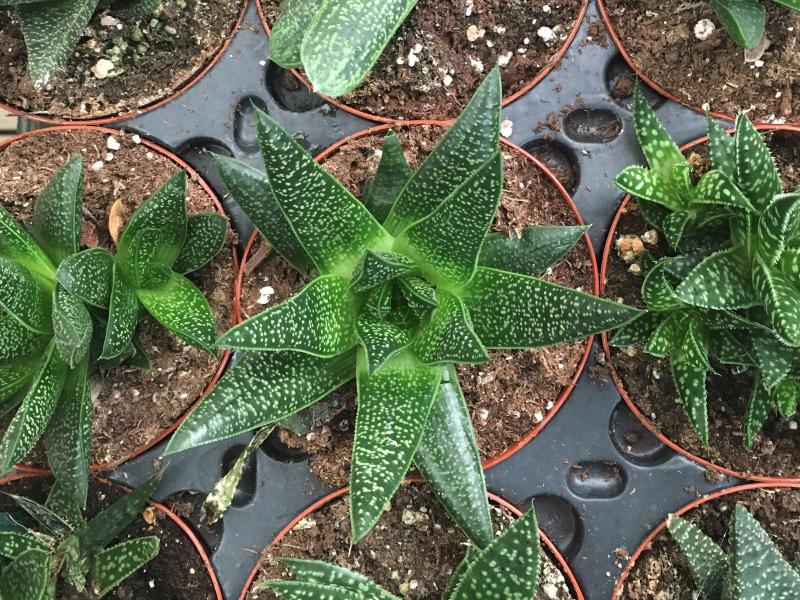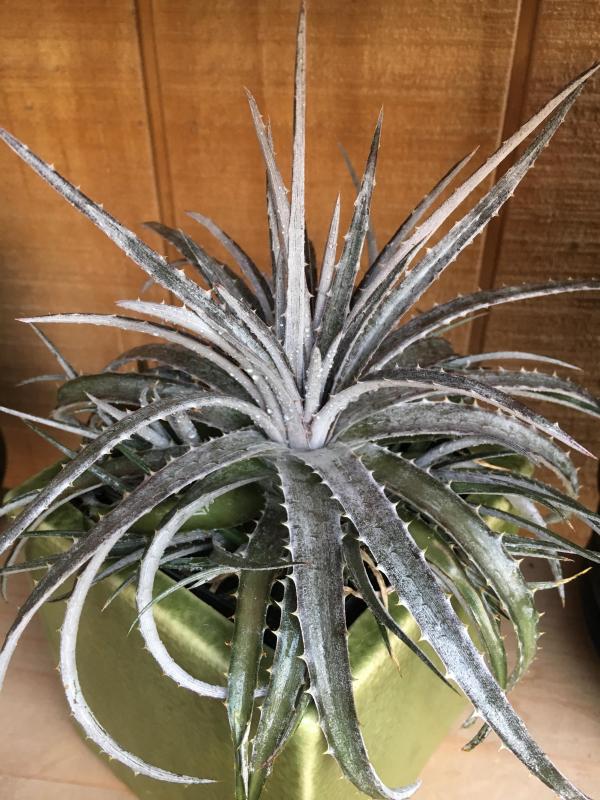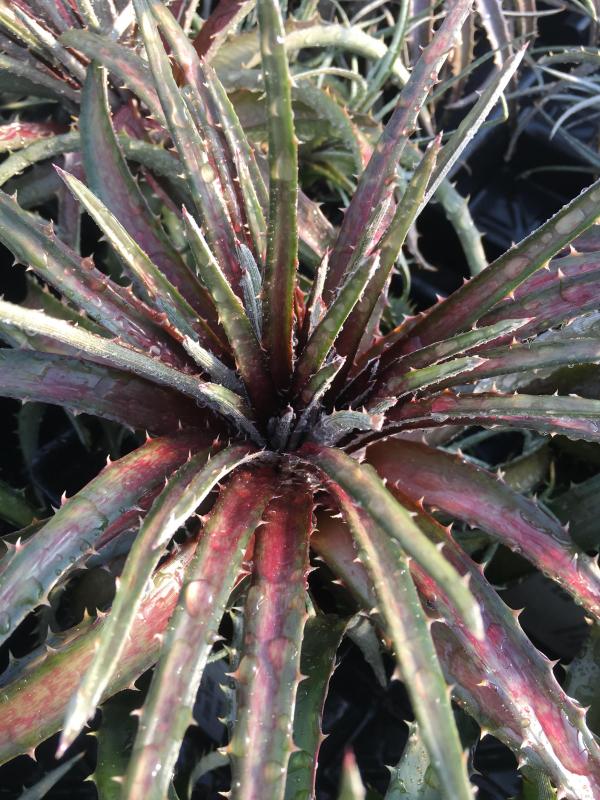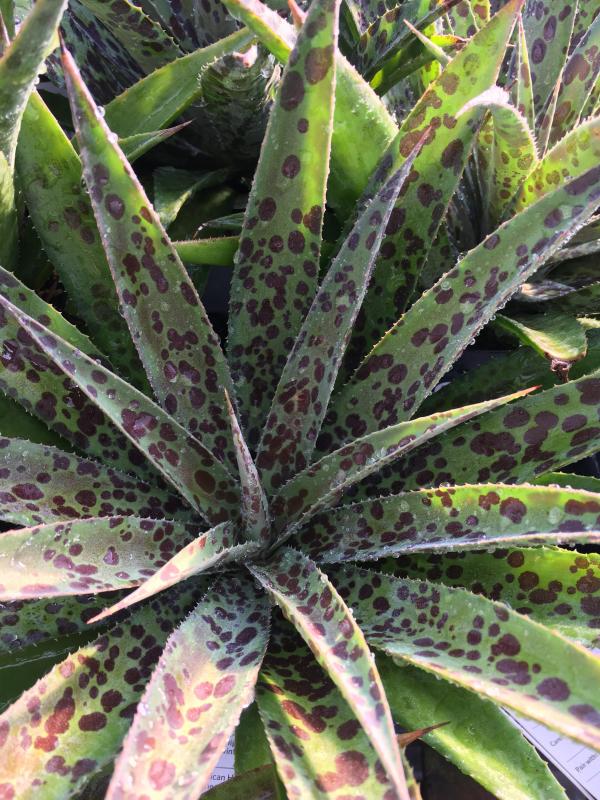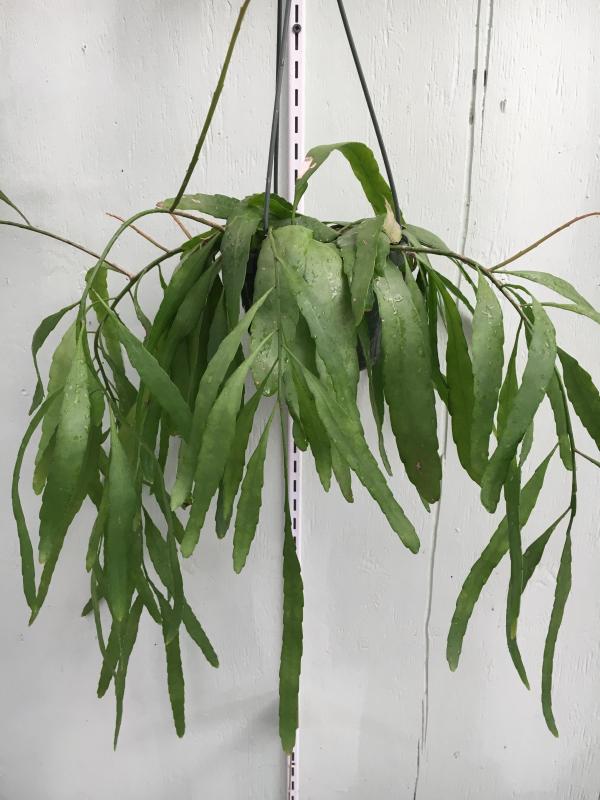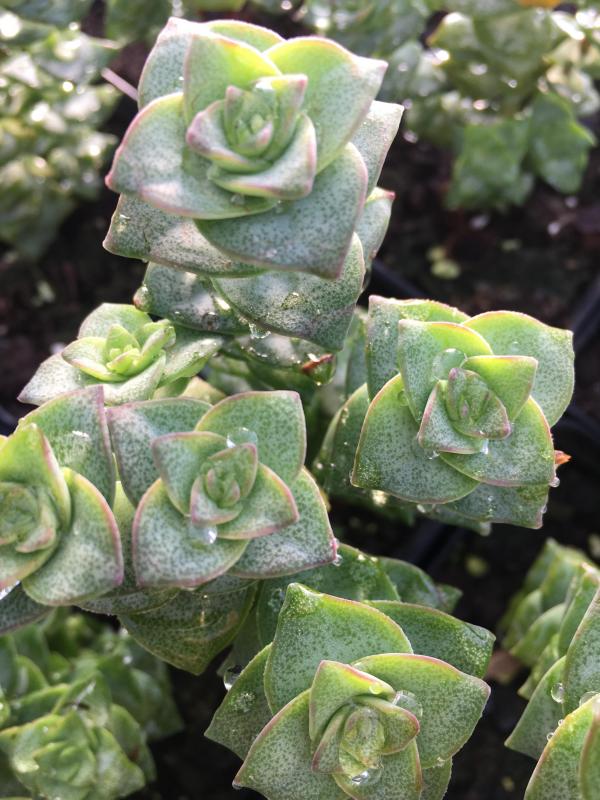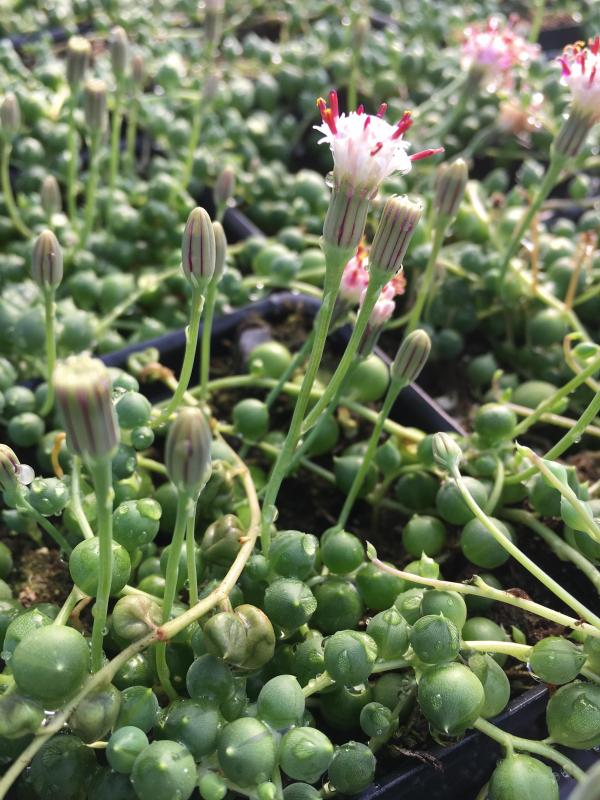Succulents, succulents, succulents! The perfect plants are everywhere these days.
Talk about easy: They don’t need much water, hardly need repotting, and look so interesting!
If you are bored by the common types, here are some different ones to add to your collection: Gasterias, Mangaves, Dyckias, Rhipsalis, and string succulents. Be the envy of all your succulent friends with these variates.
Start with good-draining soil. Pick a container about the same size as the original with a hole for drainage. Soak the plants when dry and let them get dry again before watering. That’s it!
Gasterias are related to Aloes, without the points at the end of the leaves. They are slow growing making them great for small pots. Also called Ox-tongue, since the leaves resemble a tongue: flat and rounded at the end. The leaves can either be bumpy or smooth, with different combinations of whites and greens. Keep them in bright light, but not hot, direct sun. The offshoots can be easily separated from the mother plant to create new plants.
Agaves met Manfredas and created Mangaves, with a little bit of help from humans.
Manfredas are hardy succulents in our area that resemble agaves. They die down in the winter and return in the spring. Mangaves resemble an agave but don’t have the annoying spines along the leaves; they are unfortunately not hardy in our area but make a great container plant.
They also grow faster so you can get a large specimen quite quickly. The leaves can have spots or stripes. Colors on the leaves can get more intense in the sun. A great focal point without the pain of getting pricked!
Now, if you can’t imagine having a succulent without spines, you should try a Dyckia. The leathery leaves have spines all along them. They are pretty to look at, but don’t try to hug them.
The leaves are long and thin, and can be found in red, green, yellow or silver. Dyckias are in the bromeliad family and can take some cold weather but are best brought inside for winter here in Zone 7. Offshoots can be removed to start new plants. They do require more water than some succulents when they are more actively growing and can take full sun.
One of the toughest succulents that thrives on neglect is Rhipsalis. In their natural habitat, the rainforests, they grow in the crooks of trees or rocks which makes them epiphytic.
Preferring shade or filtered light, these plants can stay in the same pot for many years.
The stems of rhipsalis are tubular or flattened and can be smooth or have hairs along them. The stems split randomly and tend to trail, making them perfect for a high shelf or hanging basket.
Flowers are along the stems and attractive fruit is produced afterward. They also root very easily from cuttings. If you are looking for a plant for hanging pots, you should try a string succulent. Basically, the trailing stems have different-shaped leaves, which they are named after. One of the most popular is string of beads (Senecio rowleyanus). Round, pea-sized leaves attach to the stems. Relatively fast growing, they can create quite long strings. String of bananas has elongated leaves like a banana. String of footballs looks like a football with pointed ends. String of buttons (Crassula perforata) has a leaf that goes all the way around the stem looking like a button.
There are all-green types and variegated forms. Some varieties are upright while others are more trailing. String of hearts (Ceropegia woodii) has two-tone green hearts.











